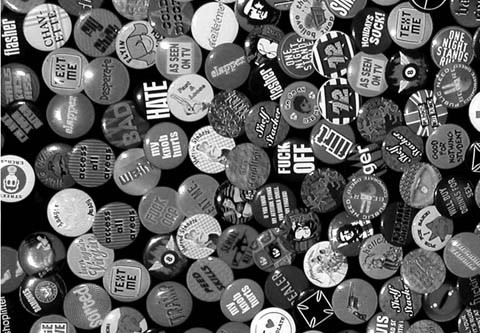Last week I got to go to the Digital Shoreditch Play event. It was a wonderful day, listening to games developers, designers, experts and Gamification gurus all with amazing tales to tell from the coal face of the industry.
The audience there were of similar calibre , most being experts in their respective fields. It was talking to a few of these people that really got me thinking. You see, within certain circles, Gamification is almost a swear word. After a little digging I discovered what the real issue was. You see I thought it was some kind of clique that was in place. “Games are ours, business can’t have them”. But actually it was more than that. It was born of a deeper understanding of the psychology of what is know as “extrinsic rewards for intrinsic motivation”. Their objection was not to the use of gamification, but to the generalized poorly conceived usage that is being used and promoted by many.
But What Does it Mean?
Still, it took me a bit of time and research to figure out what exactly was wrong. It turns out it is a similar objection to something I have been banging on about for ages. Badges are not the only or even a good way to motivate people. Taking an external, almost unrelated reward and then using it as a way to motivate people to complete tasks is actually counter productive, especially when the task is not by it’s nature fun. People begin to do the task to get the reward. If I gave you a pound for every line of data you entered, you would only enter data if you got a pound. As soon as the pound was gone, you would stop. The love of the reward takes over from the need to do the task.
When you look at badges, this is even more pronounced. By their nature, badges are useless. They are pixels on a screen that mean nothing without proper context.
The second part of this to consider is that people do not like to think they are being controlled or manipulated. If they feel you are trying to “trick” them into working by offering extrinsic rewards, they will stop – they won’t play your game. The argument I have heard is that badges have worked for the Scouts for decades. The army invented badges and seem to have done all right. However (and I have used this argument in the past), this totally misses the point.
Scouting for the Answer
The Scouts get badges to show they have acheived something that took skill to accomplish. It is informative to them, a sort of fabric pat on the back. It also shows others that they have done something, helping to bolster the pride they felt at completing the task. The other factor is that most of the badges are fun to get. If they were not, then Scouts would not do the activities. They are not driven by the collection of the badges, the are driven by the related activities. With the army, the badges are symbols of great achievement and status. They show others that this person has done something to be proud of or that they are a higher rank. It is a symbol of pride. In this case, the activity may not have been fun – but again, the badge is there to be informative. They did not do the task to get the badge. They had to do the task, the badge just shows others that they did it and did it well.
You can’t polish a turd
So, how can we make use of badges when looking at gamification. Should we use them? I still think they have a place. They can add some benefit and
motivation if used well. They should not be used as the sole motivator for achieving a task – that is a given. They should be used to re-enforce other motivators – as a digital pat on the back after the event. If people think that the only reason they are doing a task is to earn the badge, they will quickly tire of it and stop. If they get a badge that just says – “hey well done, you are great” at a seemingly
random point in progress, then they will at least think “oh that’s nice”. It won’t alter their motivation, but at least it made them smile and they can show it to others if they wish. On my review site, I use badges to congratulate people for certain activities that are done on the site. Eleven reviews gets them the Spinal Tap reward. Forty Two reviews gets them the Don’t Panic award. It is not a motivator, but it makes them smile and think – cool.
Gamification should not be about control. It is about motivation and
engagement. If a task is boring, adding badges will not make it more interesting and may demotivate in the long term.
My Mum would say “You can’t polish a turd”.
Why not look into how you make the task more “fun” and use a little imagination!.
On a side note, I will be doing more research into this. I am fascinated by the psychology behind it all, so expect more on this topic.
Similar Posts:



Nice post Andrzej. Not sure about the Army, but I can speak for the US Navy. It is not always the case where a service member has to do the task. On a ship for example, yes there are badges that everyone will receive as a whole. For example, if the ship conducts a rescue in conjunction with the US Coast Guard -everyone on the ship will receive a specific medal for that operation. However, there are badges and insignia that you can only wear for having qualified beyond the normal duties and expectations of the average crewman. There are badges that you can only attain by going the extra mile. I attained the specific ESWS pin that I was then able to wear on my uniform. This pin represented the fact that I was knowledgeable not only in my own job description -but also knowledgeable in all the ship’s ratings and functions -from engineering, to combat systems, to sonar etc. Did I learn those extra jobs because I wanted to? Not really, I did it because I knew it was a way to advance quickly. If I could accomplish qualifications expected of a crewmember with 15 years experience over me -would allow me to shine. Another example is a Navy Seal. They don’t just hand those pins out to anyone -and it’s totally optional if you want to pursue that route.
Thanks. I had a similar comment from an ex army vet on one of the syndicated sites I post to. The point is for me that people in gamification can often say – look it works in the army and scouts, it will work in your office. Totally missing the point in my mind. As you say, their meaning is totally different in that context. Same with video games, there is no need to collect them in a video game. But, the act of collecting them is often fun, so you do it. You may even get a sense of pride. Work is generally not all that fun, so getting a digital badge to say you did something not all that fun and that you had to do anyway, is not going to increase your motivation in any way! Especially if that badge has no real world value or status attached to it!
Good post. It all comes back to the issue we are facing across digital at the moment: It is becoming too easy to deploy technology/functions so people don’t stop and think “Why are we doing this? What do we get out of this? What does our audience get out of this?”
Badges have their place, ofcourse they do, if deployed with a plan in mind
Thanks @fransgaard:twitter It is also one of those things that is really easy to write, but a bit more difficult to actually do. So easy just to say – badges make stuff fun, lets use em! It worked for the scouts!